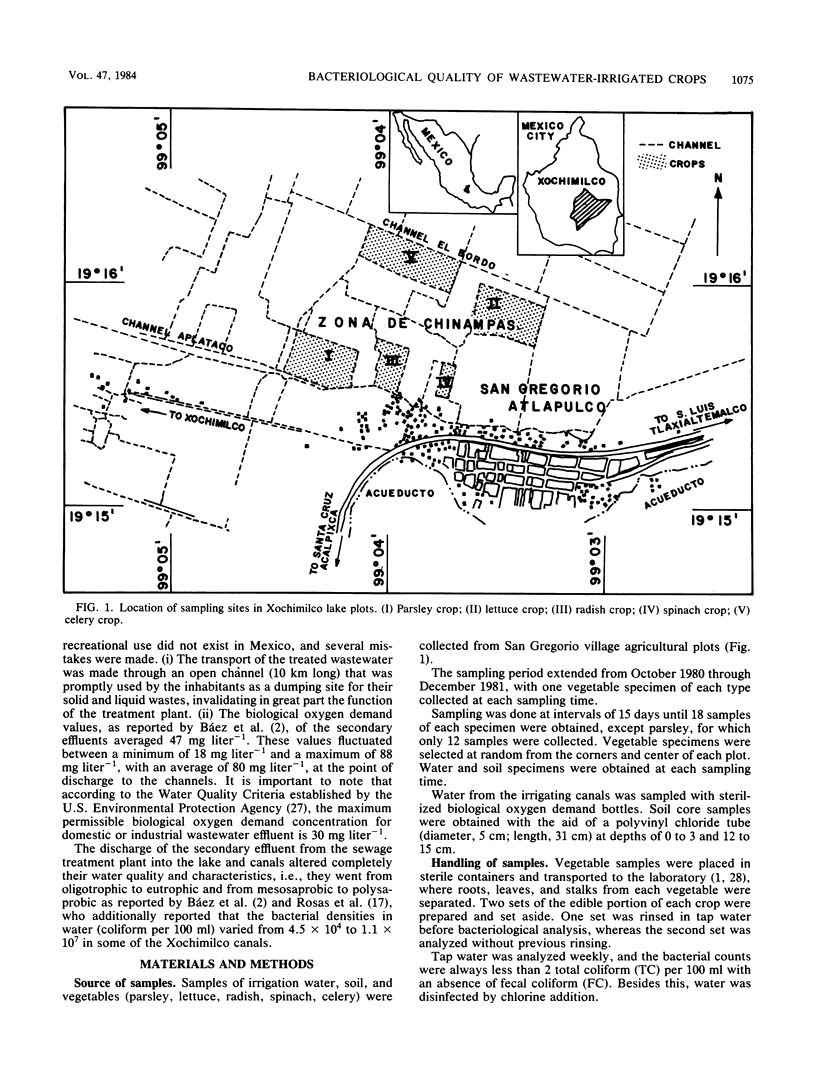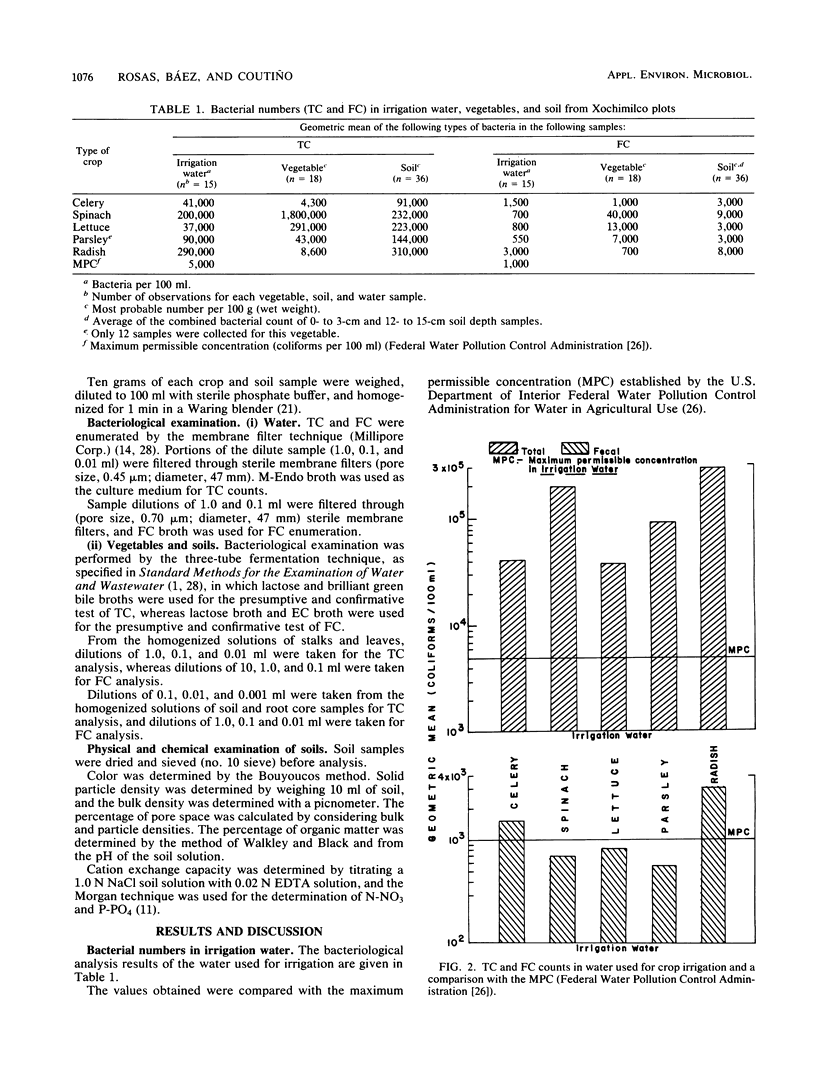Abstract
Xochimilco county plots (Mexico City), one of the most fertile agricultural areas in the Valley of Mexico, produce a large portion of the fresh vegetables consumed in the city. These plots are generally irrigated with domestic wastewater, and for this reason, it was deemed important to examine and evaluate the bacteriological quality of the water, soil, and vegetables from these plots that are harvested and marketed. The soils were also examined for the classical parameters such as nitrates, ammonia, etc., and organic matter and texture. The crops selected for this study were radishes, spinach, lettuce, parsley, and celery because they are usually consumed raw. The highest bacterial counts were encountered in leafy vegetables, i.e., spinach (8,700 for total coliform and 2,400 for fecal coliform) and lettuce (37,000 for total coliform and 3,600 for fecal coliform). Statistically significant differences in bacterial counts between rinsed and unrinsed edible portions of the crops were observed even in rinsed vegetables, and high densities of fecal coliform were detected, indicating that their consumption represents a potential health hazard. The total coliform values found in irrigation water ranged from 4 X 10(4) to 29 X 10(4), and for fecal coliform the values ranged from 5 X 10(2) to 30 X 10(2).
Full text
PDF





Selected References
These references are in PubMed. This may not be the complete list of references from this article.
- Ercolani G. L. Bacteriological quality assessment of fresh marketed lettuce and fennel. Appl Environ Microbiol. 1976 Jun;31(6):847–852. doi: 10.1128/aem.31.6.847-852.1976. [DOI] [PMC free article] [PubMed] [Google Scholar]
- Remington J. S., Schimpff S. C. Occasional notes. Please don't eat the salads. N Engl J Med. 1981 Feb 12;304(7):433–435. doi: 10.1056/NEJM198102123040730. [DOI] [PubMed] [Google Scholar]
- Tate R. L., 3rd Cultural and environmental factors affecting the longevity of Escherichia coli in Histosols. Appl Environ Microbiol. 1978 May;35(5):925–929. doi: 10.1128/aem.35.5.925-929.1978. [DOI] [PMC free article] [PubMed] [Google Scholar]
- Wright C., Kominos S. D., Yee R. B. Enterobacteriaceae and Pseudomonas aeruginosa recovered from vegetable salads. Appl Environ Microbiol. 1976 Mar;31(3):453–454. doi: 10.1128/aem.31.3.453-454.1976. [DOI] [PMC free article] [PubMed] [Google Scholar]


